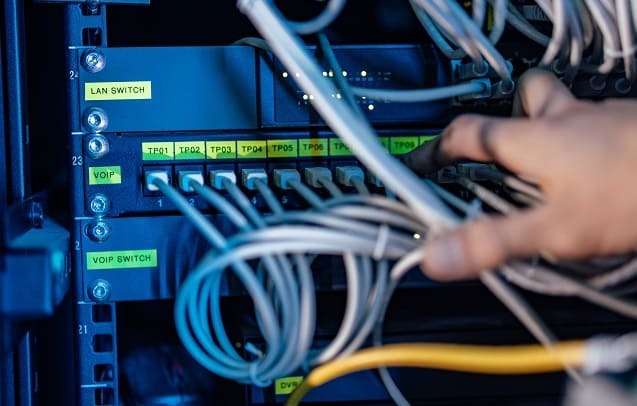
 Data Structure
Data Structure Networking
Networking RDBMS
RDBMS Operating System
Operating System Java
Java MS Excel
MS Excel iOS
iOS HTML
HTML CSS
CSS Android
Android Python
Python C Programming
C Programming C++
C++ C#
C# MongoDB
MongoDB MySQL
MySQL Javascript
Javascript PHP
PHP
- Selected Reading
- UPSC IAS Exams Notes
- Developer's Best Practices
- Questions and Answers
- Effective Resume Writing
- HR Interview Questions
- Computer Glossary
- Who is Who
What is the full form of EPON?
Introduction
Ethernet Passive Optical Network (EPON) is a high-speed optical networking technology that's well-liked and often used. Delivering dependable and scalable internet services through fiber optic cables is made possible by this method, which is also inexpensive. It offers effective data transfer and improved network performance.

EPON combines the benefits of passive optical networks and Ethernet technology. A single Optical line terminal (OLT) links several Optical network units (ONUs) at the client location using a point-to-multipoint layout.
The capability of EPON for managing large bandwidths allows it to achieve rapid and reliable communication for a variety of applications, including access to the internet, voice solutions, streaming of videos, and data for the purpose of transmission. In order to fulfill the demands of contemporary communication needs, EPON networks can reach symmetrical or asymmetrical data rates, providing upstream and downstream speeds.
The OLT and ONUs no longer require active electronic components due to EPON's passive facilities which reduces power consumption and operating expenses. Along with providing long-distance connections and adapting different network structures, it also offers flexibility in network implementation.
In order to provide high-speed broadband services to residential, commercial, and industrial customers, EPON has emerged as a preferred option. This has helped the development of telecommunications and networking technologies due to its affordability, scalability, and efficient data transmission capabilities.
Architecture of EPON
The Optical Line Terminal (OLT), the Optical Network Unit (ONU), and the Passive Optical Splitter are the three basic elements which make up the architecture of an EPON (Ethernet Passive Optical Network).
Optical Line Terminal (OLT) The OLT acts as the EPON network's primary node. It controls communication with several ONUs by establishing a connection to the service provider's core network. The OLT takes data from the core network and transforms it into optical signals for fiber optic cable transmission. Additionally, it carries out other tasks including network administration, traffic control, and capacity control.
Optical Network Unit (ONU) The optical network unit (ONU), which is situated on the customer's property, serves as the EPON network's endpoint. There is a unique ONU for each client or subscription. The ONU receives optical signals from the OLT and transforms them into electrical signals that may be used by the consumer's devices. Data transfer from the client site back to the OLT is also handled by it.
Passive Optical Splitter The most important component of the EPON system is the passive optical splitter. The OLT's optical signals may now be distributed to several ONUs due to this. In order to serve several ONUs, the splitter is a device that divides the incoming optical signal into numerous copies. The device is cost-effective since it functions passively without the need of electricity or active technology.
A single OLT is linked to many ONUs by a passive optical splitter in the point-to-multipoint topology of the EPON architecture. Due to the effective bandwidth sharing provided by this design, numerous end users and the OLT can communicate at once. Since the optical network is passive and common infrastructure is used, EPON is a cost-effective and scalable option for providing high-speed internet services.
Advantages of EPON
The numerous advantages that EPON (Ethernet Passive Optical Network) provides have played a role in its broad acceptance in the telecommunications sector. Here are some of EPON's main Advantages:
High Bandwidth EPON enables high-speed data transfer and offers plenty of bandwidth to suit the rising needs of contemporary apps and services. Fast internet access, fluid video streaming, and effective data transmission are all made possible by it, delivering a positive experience for consumers.
Scalability EPON networks have the potential to expand without difficulty to handle an increase in the number of customers and bandwidth demands. Service providers can increase their network capacity without substantial disruption or expensive renovations by integrating more Optical Network Units (ONUs) into the current infrastructure.
Cost-Effectiveness When compared to alternative optical networking technologies, EPON offers cost advantages. Because EPON is passive, there are no active electrical components required to connect the Optical Line Terminal (OLT) to the ONUs, which lowers power use and operating expenses. Longer transmission lengths are possible when fiber optics are used, which reduces the need for more facilities and technology.
Quality of Service (QoS) EPON offers efficient QoS algorithms, guaranteeing that different types of traffic are given proper priority and bandwidth distribution. Delivering real-time services like audio and video, which require low latency and reliable performance, depends heavily on these capabilities.
Energy Efficient When compared to conventional copper-based networks, EPON networks use less energy. Energy savings and reduction of the environmental effect are made possible by the lack of active electronics in the distribution network and the capacity to operate at lower power levels.
Applications of EPON
The Ethernet Passive Optical Network (EPON) is used in a variety of applications.
Residential Broadband EPON provides homes with high-speed internet connectivity, enabling tasks like web surfing, watching videos on YouTube, and internet gaming.

Multi-Dwelling Units (MDUs) EPON offers effective broadband access in gated communities and apartment complexes, providing shared capacity for a number of units.
SMEs: Small and medium-sized businesses For small and medium-sized organizations, EPON provides affordable internet connectivity options to meet their data transmission and communication requirements.
Educational Facilities EPON makes it possible for schools and universities to have quick access to the internet, promoting learning via the internet, investigation, and communication.
Hospitality Industry In the hospitality sector, EPON guarantees dependable internet access in resorts and hotels, improving customer satisfaction and facilitating seamless communication throughout the facility.
Healthcare Facilities Hospitals, clinics, and other healthcare institutions may communicate effectively, transmit data efficiently, and use telemedicine services thanks to EPON.
Industrial Applications For data transmission in industrial settings, EPON is employed. This technology enables connection between equipment, sensors, and control systems for uses including automated manufacturing and control.
EPON is an important option for offering high-speed internet services in numerous industries, satisfying the various communication demands of various user groups thanks to its adaptability and reliability.
Conclusion
The Ethernet Passive Optical Network (EPON), which provides high-speed broadband access, is a flexible and affordable technology. Residential, commercial, educational, hospitality, medical, and industrial sectors are all affected by its uses. To improve user experiences and connection infrastructure, EPON allows effective data transfer, dependable access to the internet, and effortless communication. EPON is still the go-to option for supplying high-quality broadband services in a variety of situations due to its versatility, adaptability, and expenses.
FAQs
Q1. Can EPON be applied to MDUs (multi-dwelling units)?
Ans: Yes, EPON is frequently utilized in multi-dwelling units (MDUs) to provide broadband access to several apartments inside a single structure, providing effective capacity management.
Q2. Are educational institutions using EPON?
Ans: Yes, EPON is utilized in educational facilities to support access to fast internet, e-learning investigations, and interpersonal connection within an educational environment.
Q3. Are EPON systems employed in commercial settings?
Ans: Yes, EPON is utilized in industrial settings for data transfer, making it easier for equipment, sensors, and control systems to communicate and enabling projects like automated manufacturing and control.

